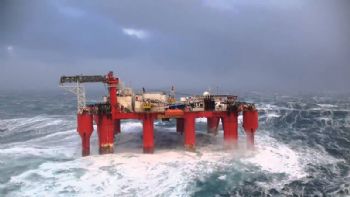
A new study of unusually large ocean waves could help to ‘inform’ the design of future oil platforms and other offshore structures.
Researchers at the University of Edinburgh have found that ‘rogue waves’, which are very powerful and dangerous, can be exacerbated when they are produced by two sets of waves crossing at a particular angle.
This phenomenon, which has been demonstrated in an experiment for the first time, is believed to have played a part in producing a 25m wave — known as the Draupner wave — that struck a North Sea oil platform in 1995.
Experiments carried out at the FloWave Ocean Energy Research Facility have shown for the first time how large waves are affected by the angle at which they intersect.
Researchers used the facility’s 25m circular testing tank — the only one of its kind in the world — to study the complex interactions that occur when waves cross in open water.
They found that when waves intersect at an angle greater than about 60deg, they cause the surface level of the ocean to rise, and this adds to the overall height of the combined wave that results.
Ton van den Bremer, who led the study while at the University of Edinburgh, said: “This improves our understanding of rogue waves, decades after this aspect of their behaviour was suggested.
“The more we know about this dangerous phenomenon, the better equipped we will be to design offshore structures and to navigate the oceans.”
The study, published in the
Journal of Fluid Mechanics, was carried out in collaboration with the University of Oxford (it was supported by the Engineering and Physical Sciences Research Council).